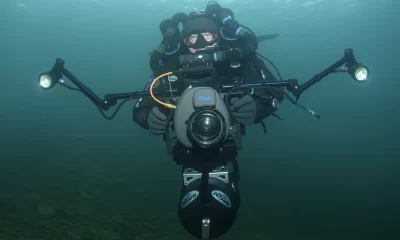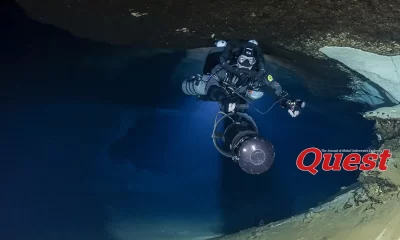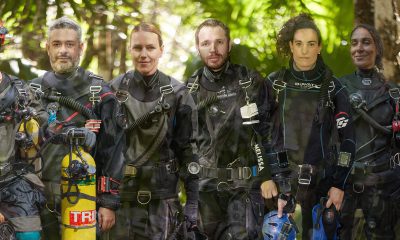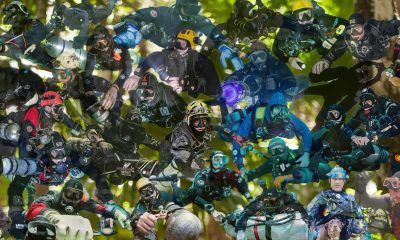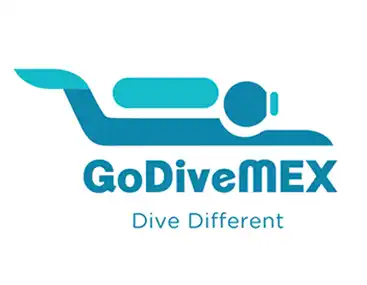Community
The Who’s Who of Sidemount

Rick Stanton
A longtime member of the British Cave Diving group (CDG) Rick is best known along with John Volanthen as the co-leaders of the CDG team that pulled off the Thai Cave rescue in 2018. A prominent member of the CDG, Rick has been involved in numerous cave exploration projects around the world, particularly those that involve dry caving in addition to diving flooded cave passages or sumps, and is known for his DIY sidemount system.
Interview by Michael Menduno
What is sidemount to you?
British CDG divers were sidemounting from the mid 60s. And that’s effectively all we did. We didn’t backmount at all until we sort of progressed to foreign countries. I started cave diving in the early 80s and sidemount was the natural thing for my system. So for me, one, I started with it, and two, I had come from a different background. I’m not a cave diver, I’m a caver who explores underwater caves. And that’s how we see the difference.
And the CDG sidemount system reflects that, right? I mean it’s designed for British caving?
Sure. So the main thing for me in the system is, one, our caves are small, so pretty much all of them benefit from sidemount and always have done. That’s why we’ve known no difference. But also, it’s multi-sump cave diving in England. So you need to carry the cylinders. And in many cases the best way to do it is to leave them on the harness and progress through the cave. And as I was describing yesterday, it’s like military webbing and the weight of the cylinders are distributed well on your shoulders and harness system to enable you in most situations to progress through the dry cave wearing the cylinders.
Has the system evolved since you started?
Yeah, it’s had a massive evolution. In the early 90s, the system as it was developed in the 60s, the cylinder has a single attachment point 1/3 of the way down from the cylinder valve. And that was it. And then it was firmly attached to a belt or a harness. But of course, you can imagine that if it was a buoyant cylinder getting empty, then it floats base end up and vice versa. So it wasn’t very stable. But that’s what we had.
Although we were the inventors of sidemount, it wasn’t until CDG divers went to Florida in the late 80s/early 90s and saw their two-point attachment system, which is what everybody uses now, the base clipped, and an elastic bungee or I think back then they used bicycle inner tube. It wasn’t until that system had been observed and then brought back here we realized that was much better. Whilst the harness pretty much remained the same, it’s a wide belt combined with the load bearing shoulder harnesses, the attachment of the cylinders is entirely different. It makes it much freer just being able to clip them on and off. And that for me was the huge evolution. Are you aware of the Toddy system?
That’s one of the sidemount systems we examine in the issue.
I’m a big fan of Toddy system. I’ve got one and I think it’s fantastic. The way the inflation hose comes off, it’s an over the shoulder hose which I prefer, but where it comes straight off the bladder without a turret, so it’s completely streamlined. So that’s quite an improvement if you like. It also distributes the lead well all over the backplate.
Having everything streamlined!
I just find it ridiculous when you see a wreck diver going horizontal and their cylinders are vertical. You see lots of that. I know that they’re not swimming anywhere and you don’t really need to if you’re dropping into the wreck, but to me that is crazy.
Our sidemount system, as it evolved, is really the basis for all the diving I do including multiple rebreather divers. In fact, my sidemount rebreather is mounted the same way that we put our sidemount cylinders. So, everything is parallel to our body and streamlined

You use the same basic system whether you’re diving open circuit or closed circuit, right?
That’s right.
Do you have a perfect configuration for what you do?
We’ve got a base system, but our huge advantage has been adapting it i.e., we modify the equipment configuration to best suit the cave we are exploring..
The right tool for the right job?
I know its contrary to GUE’s original philosophy of a standard configuration, and I have nothing against them, but the system works for us. I don’t know if you touched on this, but sidemount is also a fantastic system for disabled divers because it’s stable. You’ve got the air bladder on the back, the cylinders on your side and you can put the weight on your front if you wish. It creates a super stable system greatly enhancing their underwater experience.
I believe former KISS owner Mike Young developed the Sidekick for a wounded veteran who had disabilities?
That’s correct.
Return to: The Who’s Who of Sidemount
DIVE DEEPER
YouTube: Rick Stanton
Red Carpet New TV: Tham Luang Thai Cave Rescue Diver Rick Stanton Interview
CNN: Thai cave diver Rick Stanton reflects on the mission to save 13 lives that transformed his own
Wikipedia: Rick Stanton



















